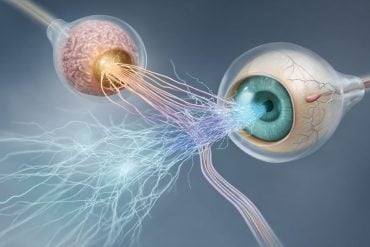Summary: Researchers overturned three decades of scientific consensus about the role of LTP (Long-Term Potentiation) in memory and learning. The team discovered that it’s not the enzymatic actions of CaMKII that are needed for LTP, but its structural functions.
This breakthrough opens the avenue for a new class of CaMKII inhibitors that can target Alzheimer’s without affecting essential memory functions. Bayer’s lab had previously shown that inhibiting enzymatic CaMKII can counter the devastating effects of amyloid-beta plaques, linked to Alzheimer’s disease.
Key Facts:
- The research challenges the long-held belief that enzymatic actions of the enzyme CaMKII are required for long-term potentiation (LTP), a key process in learning and memory.
- The discovery introduces a new class of CaMKII inhibitors that can protect against Alzheimer’s effects without impairing memory and learning.
- Ulli Bayer’s laboratory is already testing these CaMKII inhibitors for their therapeutic potential in human Alzheimer’s treatment.
Source: University of Colorado
Scientists at the University of Colorado Anschutz Medical Campus have made a `paradigm shifting’ discovery on the mechanisms required for learning and memory that could lead to new therapies for Alzheimer’s disease and potentially Down syndrome.
The study was published Wednesday in the journal Nature.
For over 30 years, researchers believed that LTP or long-term potentiation, which is crucial for learning and memory, required enzymatic actions by an enzyme known as CaMKII.
But a team of researchers led by Ulli Bayer, PhD, professor of pharmacology at the University of Colorado School of Medicine, found that LTP requires structural not enzymatic functions of CaMKII.
That’s significant, Bayer said, because it opens the door to the therapeutic use of a new class of inhibitors that target only the enzymatic activity of CaMKII, but not the structural functions required for memory and learning.
Previous studies by Bayer’s laboratory showed that inhibiting enzymatic CaMKII activity protects against some of the effects of amyloid-beta (Abeta) plaques in the brain, a hallmark of Alzheimer’s disease (AD).
The researchers found one group of inhibitors that protected from the Abeta effects without impairing LTP, making it potentially useful in treating a number of brain diseases without debilitating side effects.
“The implications are that a certain class of CaMKII activity inhibitors actually could be used chronically to treat brain conditions including Alzheimer’s disease,” said Bayer, senior author of the study.
“This is super novel, as it has previously been thought that any CaMKII activity inhibitor would block synaptic plasticity that underlies learning and memory so their chronic use would be counter-indicated.”
Bayer said if the inhibitors work in humans, they could provide additional benefit in conjunction with any current AD treatment strategies.
“That’s because different mechanisms are targeted,” he said. “We are targeting the downstream effects of Abeta. While we are not even pretending that this would be curative, it has the potential to dramatically alleviate some of the most devastating symptoms of memory loss and learning.”
The Bayer lab is now testing whether the predictions made by their ground-breaking paper can be harnessed for human therapy.
About this neuroscience, memory, and learning research news
Author: David Kelly
Source: University of Colorado
Contact: David Kelly – University of Colorado
Image: The image is credited to Neuroscience News
Original Research: Open access.
“LTP induction by structural rather than enzymatic functions of CaMKII” by Ulli Bayer et al. Nature
Abstract
LTP induction by structural rather than enzymatic functions of CaMKII
Learning and memory are thought to require hippocampal long-term potentiation (LTP), and one of the few central dogmas of molecular neuroscience that has stood undisputed for more than three decades is that LTP induction requires enzymatic activity of the Ca2+/calmodulin-dependent protein kinase II (CaMKII).
However, as we delineate here, the experimental evidence is surprisingly far from conclusive. All previous interventions inhibiting enzymatic CaMKII activity and LTP also interfere with structural CaMKII roles, in particular binding to the NMDA-type glutamate receptor subunit GluN2B.
Thus, we here characterized and utilized complementary sets of new opto-/pharmaco-genetic tools to distinguish between enzymatic and structural CaMKII functions.
Several independent lines of evidence demonstrated LTP induction by a structural function of CaMKII rather than by its enzymatic activity. The sole contribution of kinase activity was autoregulation of this structural role via T286 autophosphorylation, which explains why this distinction has been elusive for decades.
Directly initiating the structural function in a manner that circumvented this T286 role was sufficient to elicit robust LTP, even when enzymatic CaMKII activity was blocked.







